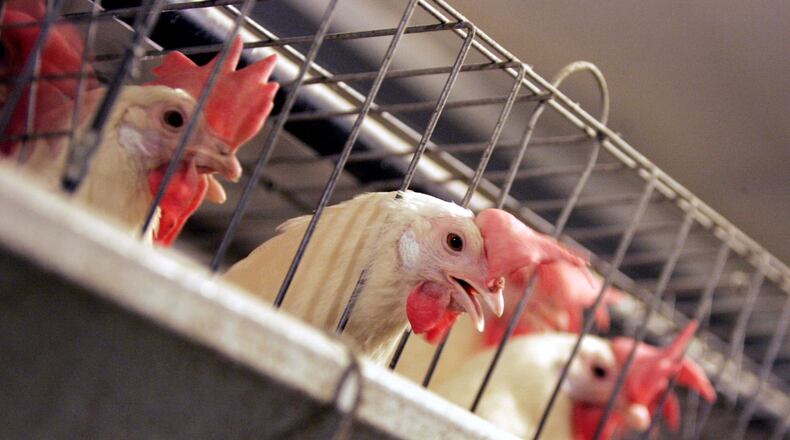Georgia farmers aren’t likely to see profits this year remain as sky high as they were when the pandemic eased, according to the latest University of Georgia forecast. But some of the state’s biggest agriculture sectors could do fairly well.
Beef prices are expected to continue to rise nationally, and that could keep pushing consumers to buy more chicken instead, said UGA agriculture professor Gopinath Munisamy, a specialist in international trade and agriculture policy.
That should be relatively good news for Georgia’s poultry industry, which accounts for a massive chunk of the state’s agriculture business.
Munisamy, who shared his outlook at UGA’s annual agriculture forecasting event on Friday, also sees potential positives for peanuts and maybe cotton, two other key commodities for Georgia.
Peanut prices have risen, amid challenges with the crop in Texas, he said. And export demand for Georgia peanuts remains robust. The outlook for cotton has been a bit unsettled, but recent data suggest consumers are still spending on clothes, which could ultimately mean good things for cotton demand.
Meanwhile, consumers face a mixed future on what they will pay for food. The latest federal outlook suggests higher prices ahead for dining out, but price cuts for food eaten at home.
Profits steadying after pandemic gyrations
Munisamy said he expects profits for the state’s sprawling agriculture industry to fall this year from a remarkable peak in 2022. That trend would be in line with the U.S. Department of Agriculture’s forecast for the industry nationwide.
Recent food price increases are “not reaching the farmer at large,” said Mark McCann, a UGA assistant dean working on agriculture issues around the state. For many farmers, the profit increases were “a one-year spike and then it went away.”
Farmers’ expenses are expected to continue to rise even as the prices they can command for many products, particularly crops, are expected to fall. Imports are expected to increase the squeeze on U.S. farmers.
Still, Munisamy said he isn’t expecting profits to sink as low as they did in 2020, when the start of the pandemic devastated returns for some farm operations and consumers sharply shifted buying habits. In Georgia, overall agriculture profits at the time were the lowest they had been in several years.
But by 2022, profits for Georgia’s agriculture sector had soared to nearly $5.2 billion, 80% higher than what they averaged for the previous eight years, and a peak for at least the last 15 years.
Munisamy said profits for 2023 and 2024 will be closer to what the last 10-year average has been.
Still, there can be widely different financial outcomes among farm products.
One Georgia segment that is likely to struggle is fruits and vegetables.
Government-required wage increases for workers legally brought in from other countries have boosted costs, Munisamy said. At the same time, pressure is expected to increase from imported fruits and vegetables, particularly from Mexico and South American nations, which are competing more directly with Georgia during its harvest windows.
That has cut into the prices Georgia farmers can get for a variety of crops, including bell peppers, blueberries and squash, he said.
About the Author
Keep Reading
The Latest
Featured



